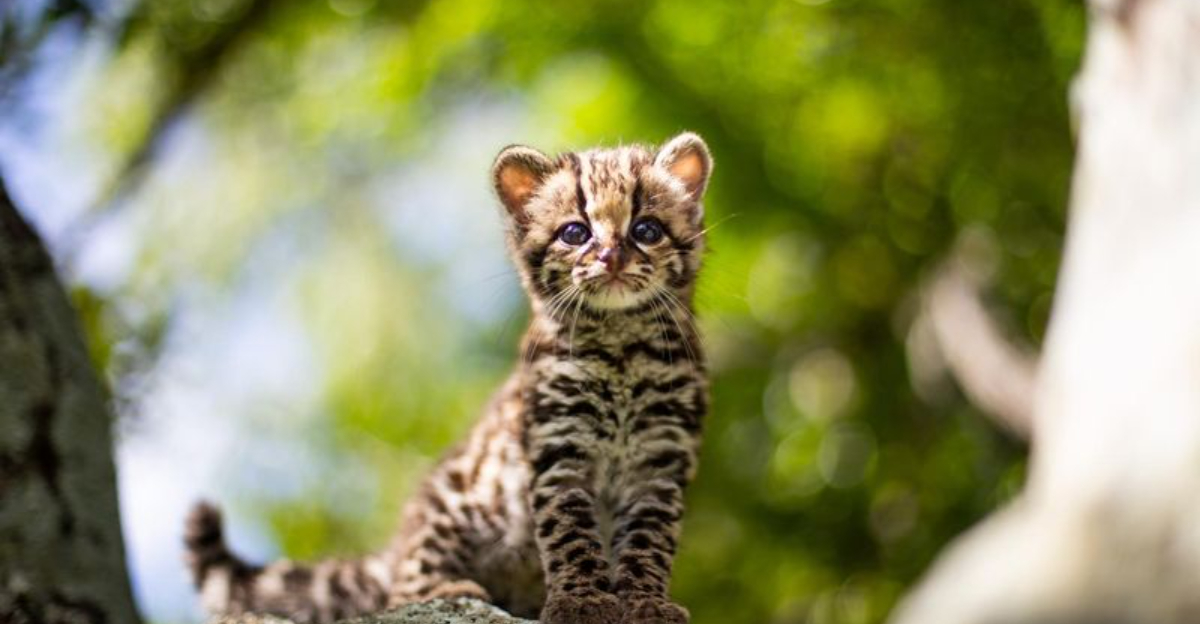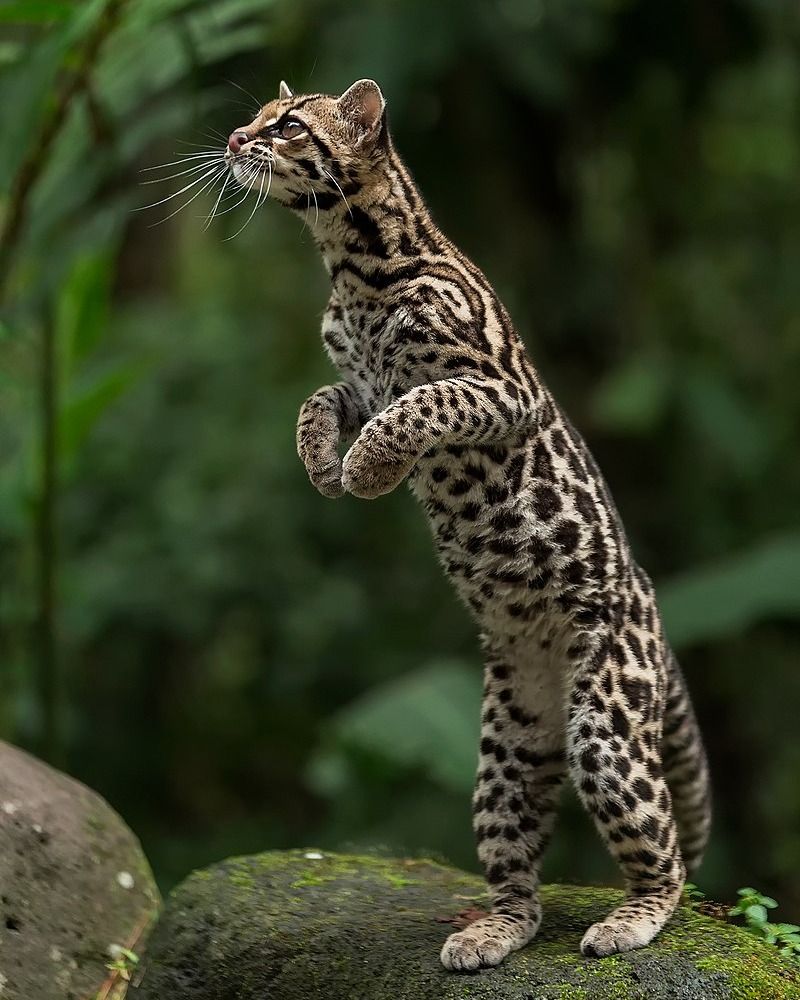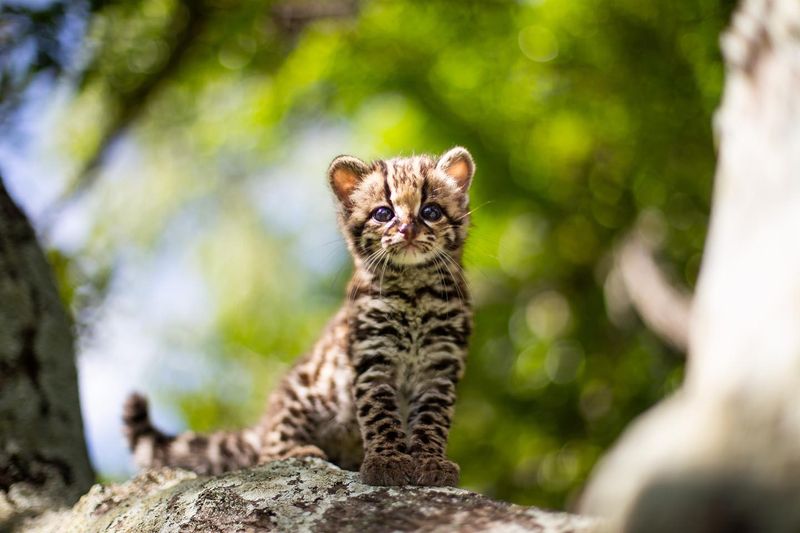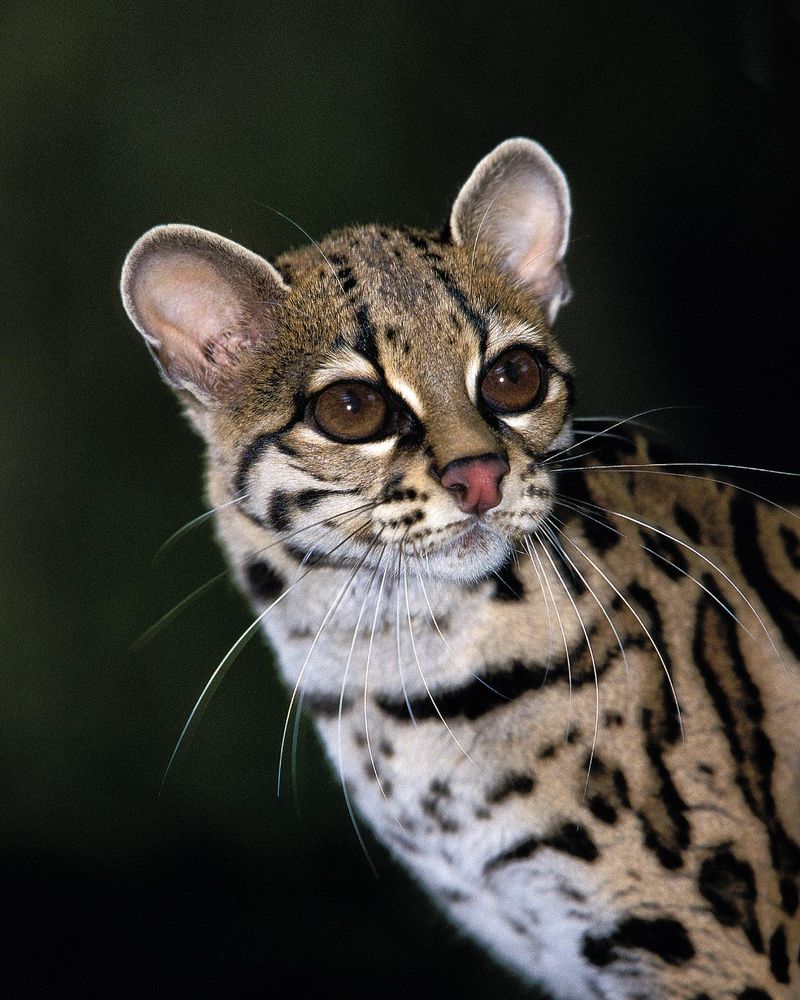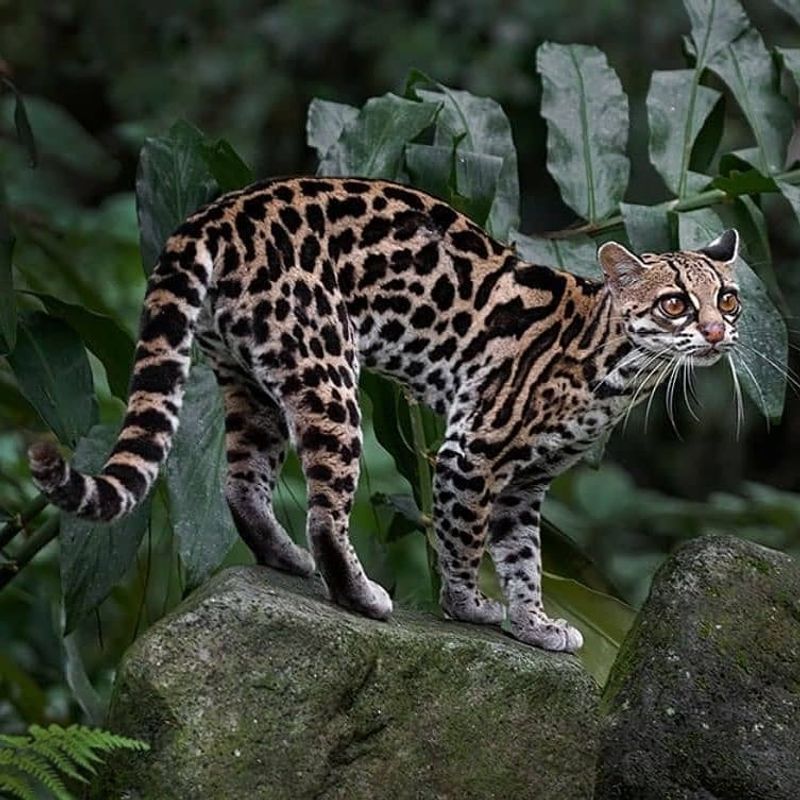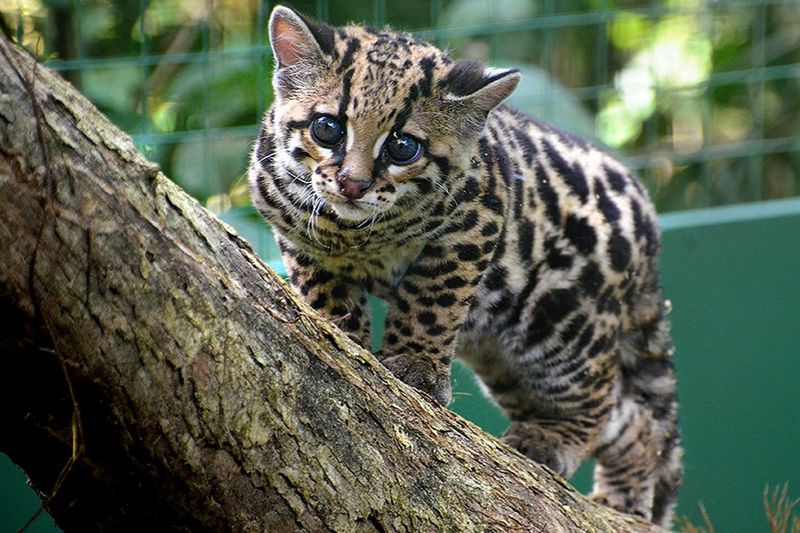📖 Table of Content:
High in the rainforest canopy, where sunlight flickers through tangled leaves and the ground feels like a distant world, lives a feline unlike any other. With the agility of a monkey, the eyes of a night hunter, and the elegance of a shadow, the margay is one of nature’s most astonishing secrets.
This wild cat doesn’t just climb trees—it owns them. With ankles that twist 180 degrees and the ability to run headfirst down trunks, the margay seems to defy gravity itself. But despite its incredible skills, few people have ever seen one in the wild.
Why? Because margays are elusive, nocturnal, and tragically endangered. As deforestation tears through the forests they call home, these mysterious acrobats are vanishing before we even get to know them.
Let’s climb into the treetops and discover what makes the margay one of the most extraordinary—and overlooked—cats on Earth.
1. Masters of the Treetop World
Margays spend up to 90% of their lives in trees, rarely touching the forest floor. Their ankle joints can rotate an impressive 180 degrees, allowing them to run headfirst down tree trunks and even hang from branches by a single paw! This remarkable flexibility isn’t found in ordinary house cats.
These feline acrobats can leap horizontal distances of up to 12 feet between branches. Their extra-large paws work like natural climbing gloves, gripping bark with ease while their long tails provide perfect balance during tricky maneuvers.
Scientists believe margays evolved these skills to avoid competing with jaguars and ocelots that hunt on the ground. Their tree-dwelling lifestyle has made them true aerial specialists of the rainforest.
2. Mimicking Monkeys in More Ways Than One
Did you know margays can actually mimic the sounds of their prey? Researchers have documented these clever cats imitating the calls of baby monkeys to lure curious adults within pouncing range. This rare hunting technique, called acoustic mimicry, shows just how smart these felines really are.
Beyond sound mimicry, margays have adopted monkey-like movements, too. They can hang by their hind feet while using their front paws to grab food, just like monkeys do! Their tails, while not prehensile like a monkey’s, provide crucial balance for these aerial stunts.
No other wild cat in the Americas has developed such specialized monkey-like adaptations for life in the forest canopy.
3. Spot the Difference: Margay’s Unique Beauty
Weighing just 6-10 pounds, margays might look like oversized house cats at first glance, but their extraordinary spotted coats tell a different story. Their fur showcases beautiful rosette patterns similar to jaguars but arranged in horizontal rows that help them blend perfectly with dappled forest light.
The margay’s enormous eyes—proportionally the largest of any cat—shine with a golden-green glow, perfectly designed for night hunting. Their unusually long tails, often matching their body length, serve as essential balancing tools during aerial adventures.
Many people confuse margays with ocelots, but margays have more delicate features, longer tails, and those distinctive rotating ankle joints that make them true tree specialists.
4. Mysterious Night Dancers of the Forest
Under the cover of darkness, margays transform into silent hunters. These nocturnal ninjas move through the treetops with ghostly precision, tracking everything from birds and tree frogs to squirrels and monkeys. Their huge eyes can gather six times more light than human eyes!
Unlike many cats, margays rarely follow predictable patterns. Each individual creates unique hunting routes that change regularly, making them incredibly difficult for scientists to study. Some researchers have spent years in the rainforest and spotted them only a handful of times.
Their secretive lifestyle has earned them the nickname “ghost cats” among local communities who share the forests with these elusive felines.
5. Fighting for Survival in Shrinking Forests
With fewer than 10,000 adult margays left in the wild, these remarkable tree-dwelling cats face serious threats. Deforestation hits them especially hard because they rarely cross open areas and need connected forest canopies to survive. When trees disappear, so do margays.
Their specialized adaptations make them highly vulnerable—they simply cannot adapt to life outside mature forests. Conservation efforts now focus on creating protected forest corridors to help margay populations stay connected and healthy.
Some communities have become margay guardians, working with scientists to monitor these cats using camera traps. Each rare photograph helps researchers better understand how to protect these extraordinary feline acrobats before they vanish from our planet.
